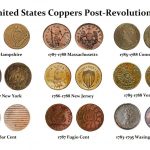Today’s release of the August Producer Price Index (PPI) for Final Demand came in at 0.0% month-over-month seasonally adjusted, down from 0.2% in July. It is down -0.7% year-over-year, the seventh consecutive month of YoY shrinkage. Core Final Demand (less food and energy) came in at 0.3% MoM for the third consecutive month and is up 0.0% YoY. The Investing.com forecasts were for -0.1% headline and 0.1% core.
Here is the summary of the news release on Finished Goods:
The Producer Price Index for final demand was unchanged in August, seasonally adjusted, the U.S. Bureau of Labor Statistics reported today. Final demand prices rose 0.2 percent in July and 0.4 percent in June. On an unadjusted basis, the final demand index moved down 0.8 percent for the 12 months ended in August, the seventh straight 12-month decline. (See table A.)
In August, a 0.4-percent increase in the index for final demand services offset a 0.6-percent decrease in prices for final demand goods. More…
Finished Goods: Headline and Core
The BLS shifted its focus to its new “Final Demand” series in 2014, a shift we fully support. However, the data for these series are only constructed back to November 2009 for Headline and April 2010 for Core. Since our focus is on longer term trends, we continue to track the legacy Producer Price Index for Finished Goods, which the BLS also includes in their monthly updates.
The Headline Finished Goods for August came in at -0.5% MoM and is down -2.9% YoY. Core Finished Goods were down -0.1% MoM but up 2.1% YoY.
Now let’s visualize the numbers with an overlay of the Headline and Core (ex food and energy) PPI for finished goods since 2000, seasonally adjusted. The plunge since mid-2014 in headline PPI is, of course, energy related — now off its interim low set in April. Core PPI has remained relatively stable since early 2014.

As the next chart shows, the Core Producer Price Index is far more volatile than the Core Consumer Price Index. For example, during the last recession producers were unable to pass cost increases to the consumer.

















Leave A Comment